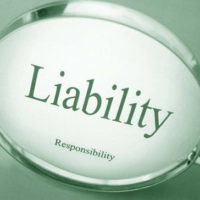When Is a Landowner Responsible for Premise Liability?

Premise liability is a legal concept. It is part of a personal injury claim when it refers to a property owner being negligent. It can also apply to an individual who was operating the property and is responsible for repairing defects that could cause harm.
Sustained injuries in premise liability claims are usually slip and fall accidents. Even though these injuries happen often, that does not mean the injuries are minor. Slip and fall injuries can be minor, serious, or even fatal. If you have sustained an injury on another’s property, contact a Baltimore personal injury attorney today.
What Is the Responsibility of Property Owners?
Owners and operators or property have a responsibility to keep the land they own and maintain safe throughout their ownership or management. But too often, the landlord’s duty, and the failure to see that duty through, only comes to light when an individual is injured.
In order to obtain compensation following an injury, it has to be shown that the landowner was aware of a danger on their property. The other option is to demonstrate that even if they were not aware of the risk, they should have been. The discovery of the hazard was part of their duty, for example.
Then, it must be demonstrated that there is a clear connection between the hazard and the injury the victim sustained. That if the property owner had taken precautions and made a reasonable fix to the hazard, the injury would likely have not occurred at all.
A Baltimore personal injury attorney can help you to compile all of the documentation necessary to strengthen your claim. With all of the elements above proven, a victim is strongly positioned to recover compensation for the injuries they sustained due to the property owner’s failures.
Are There Different Types of Negligence?
Yes, when a legal team is building a case against the owner of the property, they will likely focus on one particular type of negligence.
Types of landowner negligence:
- Failure to fix a risk.
- Failure to warn of risk.
- Failure to maintain property.
An example of failure to fix a risk is if a customer falls in a store because they slipped on a spill that was not cleaned up. In situations like this, the store could be held responsible because it is reasonable to expect store floors to be safe for walking. Failure to warn of risk could be if there was a hazard such as a dog that bites and a person was then bit by the animal. Failure to maintain could be a landlord who was aware of cracked concrete in a communal area yet the problem was never fixed.
Were you injured on a property that was not maintained properly? You need a knowledgeable personal injury attorney to secure the compensation you and your family deserve. Contact the legal team at Iamele & Iamele, LLP to understand your options. Our attorneys successfully secure compensation for personal injury victims in the Baltimore-Washington Metropolitan. Contact us today for a free initial consultation.
https://www.iamelelawfirmbaltimore.com/how-does-a-baltimore-claim-become-a-baltimore-lawsuit/

